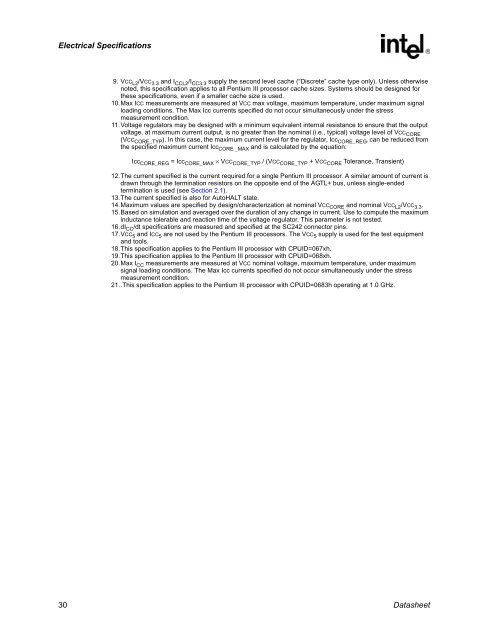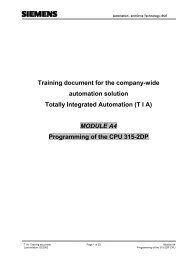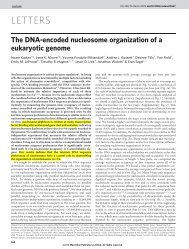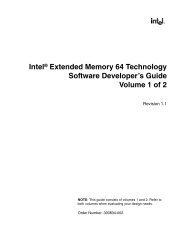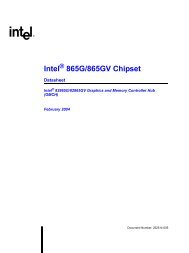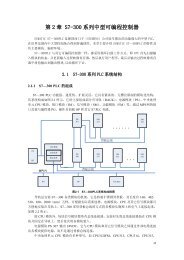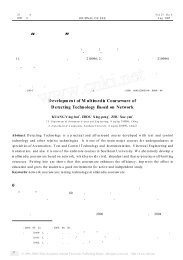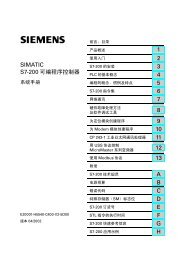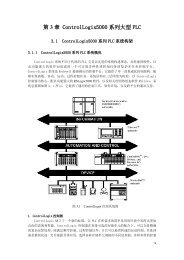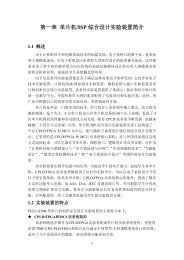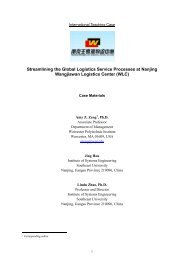Intel Pentium III Processor for the SC242 at 450 MHz to 1.0 GHz
Intel Pentium III Processor for the SC242 at 450 MHz to 1.0 GHz
Intel Pentium III Processor for the SC242 at 450 MHz to 1.0 GHz
You also want an ePaper? Increase the reach of your titles
YUMPU automatically turns print PDFs into web optimized ePapers that Google loves.
Electrical Specific<strong>at</strong>ions9. VCC L2 /VCC 3.3 and I CCL2 /I CC3.3 supply <strong>the</strong> second level cache (“Discrete” cache type only). Unless o<strong>the</strong>rwisenoted, this specific<strong>at</strong>ion applies <strong>to</strong> all <strong>Pentium</strong> <strong>III</strong> processor cache sizes. Systems should be designed <strong>for</strong><strong>the</strong>se specific<strong>at</strong>ions, even if a smaller cache size is used.10.Max ICC measurements are measured <strong>at</strong> VCC max voltage, maximum temper<strong>at</strong>ure, under maximum signalloading conditions. The Max Icc currents specified do not occur simultaneously under <strong>the</strong> stressmeasurement condition.11.Voltage regul<strong>at</strong>ors may be designed with a minimum equivalent internal resistance <strong>to</strong> ensure th<strong>at</strong> <strong>the</strong> outputvoltage, <strong>at</strong> maximum current output, is no gre<strong>at</strong>er than <strong>the</strong> nominal (i.e., typical) voltage level of VCC CORE(VCC CORE_TYP ). In this case, <strong>the</strong> maximum current level <strong>for</strong> <strong>the</strong> regul<strong>at</strong>or, Icc CORE_REG , can be reduced from<strong>the</strong> specified maximum current Icc CORE _MAX and is calcul<strong>at</strong>ed by <strong>the</strong> equ<strong>at</strong>ion:Icc CORE_REG = Icc CORE_MAX × VCC CORE_TYP / (VCC CORE_TYP + VCC CORE Tolerance, Transient)12.The current specified is <strong>the</strong> current required <strong>for</strong> a single <strong>Pentium</strong> <strong>III</strong> processor. A similar amount of current isdrawn through <strong>the</strong> termin<strong>at</strong>ion resis<strong>to</strong>rs on <strong>the</strong> opposite end of <strong>the</strong> AGTL+ bus, unless single-endedtermin<strong>at</strong>ion is used (see Section 2.1).13.The current specified is also <strong>for</strong> Au<strong>to</strong>HALT st<strong>at</strong>e.14.Maximum values are specified by design/characteriz<strong>at</strong>ion <strong>at</strong> nominal VCC CORE and nominal VCC L2 /VCC 3.3 .15.Based on simul<strong>at</strong>ion and averaged over <strong>the</strong> dur<strong>at</strong>ion of any change in current. Use <strong>to</strong> compute <strong>the</strong> maximuminductance <strong>to</strong>lerable and reaction time of <strong>the</strong> voltage regul<strong>at</strong>or. This parameter is not tested.16.dI CC /dt specific<strong>at</strong>ions are measured and specified <strong>at</strong> <strong>the</strong> <strong>SC242</strong> connec<strong>to</strong>r pins.17.VCC 5 and ICC 5 are not used by <strong>the</strong> <strong>Pentium</strong> <strong>III</strong> processors. The VCC 5 supply is used <strong>for</strong> <strong>the</strong> test equipmentand <strong>to</strong>ols.18.This specific<strong>at</strong>ion applies <strong>to</strong> <strong>the</strong> <strong>Pentium</strong> <strong>III</strong> processor with CPUID=067xh.19.This specific<strong>at</strong>ion applies <strong>to</strong> <strong>the</strong> <strong>Pentium</strong> <strong>III</strong> processor with CPUID=068xh.20.Max I CC measurements are measured <strong>at</strong> VCC nominal voltage, maximum temper<strong>at</strong>ure, under maximumsignal loading conditions. The Max Icc currents specified do not occur simultaneously under <strong>the</strong> stressmeasurement condition.21..This specific<strong>at</strong>ion applies <strong>to</strong> <strong>the</strong> <strong>Pentium</strong> <strong>III</strong> processor with CPUID=0683h oper<strong>at</strong>ing <strong>at</strong> <strong>1.0</strong> <strong>GHz</strong>.30 D<strong>at</strong>asheet


